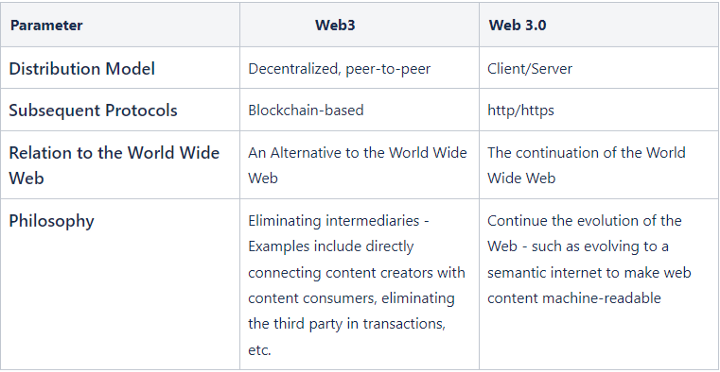Introduction
The Internet, the network of networks connecting computers around the world, emerged in 1969 and has since undergone numerous technological and infrastructural modifications to become what it is today. The initial purpose of the Internet as a means of sharing information has evolved over the years, and the web has become an essential part of our lives.
The Web, elaborated as the World Wide Web, is a collection of websites built on top of the Internet. These websites contain information in the form of text pages, digital images, videos, audio, etc., which users can obtain from anywhere in the world. Invented in 1989, the WWW has gradually evolved from its initial state as a static page to the more interactive version we witness today.
Evolution of the Web
The World Wide Web has evolved significantly since its inception in 1989. From static, read-only websites to the two-way interaction and user-generated content production of Web 2.0, the Web has changed dramatically in recent years. But the evolution doesn’t stop there. The next generation of the web, Web 3.0, is in the making and promises an even more advanced and personalized experience for end users.
Web 1.0
Web 1.0, the initial version of the World Wide Web was developed by Tim Berners-Lee in 1989 and lasted until 2004. Generally known as the read-only web, websites of this era were informational only and comprised purely static content. They lacked interactive content or design components and were connected primarily through hyperlinks. In addition, only text emails were allowed to be written and sent during these times, while images could not even be uploaded or attached.
Web 2.0
Web 2.0, also known as the second generation of the web, is the predominant web of our era that emerged in 2004 and continues to thrive. It is considered the read/write web that facilitates user interaction, which is a vast improvement over the one-way communication that Web 1.0 allowed. It allows websites to produce user-generated content, which improves usability and interoperability for end users and thus makes it the participatory social web that it is.
Web 3.0
Conceived as the next generation of the web, Web 3.0 is the executable web or the read-write-run version of the web. It is also known as the semantic web and is an extension of the World Wide Web that uses standards set by the World Wide Web Consortium (W3C). Its goal is to make the Internet smarter by handling information with human-like intelligence using artificial intelligence systems.
The Web3 and Web 3.0 vision
The core idea behind Web3, coined by Ethereum co-founder Gavin Wood in 2014, is to fight against the centralized power and dominance of a handful of Web2 giants like Facebook, Amazon or Google by creating a decentralized version of the Internet. On the other hand, Tim Berners-Lee, the inventor of the World Wide Web, wants to connect everything on the web at the data level to “unlock its full potential.”
Difference between web3 and web 3.0
The semantic web, known as web 3.0, focuses on efficiency and intelligence by reusing and linking data across websites. However, the decentralized web or web3 places a strong emphasis on security and empowerment by returning control of data and identity to users.
The semantic web uses a central location called a solid pod to store all user data, allowing users to manage third-party access to their data. The solid pods also issue a unique WebID to users that act as an identity within the ecosystem. In the blockchain-based web3, users can store their data in a cryptocurrency wallet, which they can access using their private keys.
In addition, both use different technologies to implement their data security purpose. Web3 employs blockchain technology, while web 3.0 uses certain data exchange technologies such as RDF, SPARQL, OWL and SKOS.
Data in web3 is difficult to modify or delete as it is scattered across multiple nodes; however, data in web3.0 can be changed effortlessly. In addition, data stored in the solid pod is centralized, while keys stored in cryptographic wallets provide access to asset data residing on a blockchain.
Similarities between Web3 and Web 3.0
Although both web3 and web 3.0 have similar names, there is a big difference in their concepts and approach. However, both have a common purpose. Both web3 and web 3.0 aim to create a better version of the Internet while maintaining user control over their data. The central difference lies in the approach taken to achieve this purpose. While data is stored in a solid module in the semantic web, web3 uses decentralized technologies for the same.
It is worth noting here that both web3 and web 3.0 are still under construction (early stage). Although several web3 and web 3.0 experiments are underway, they have not yet been fully implemented.
Endnote
Many people around the world, including Lemuel Park, the co-founder and CTO of Foster City, consider web3 to be the same as 3.0. They believe that the future of the web will be an integration of vital web 3.0 elements such as machine readability and web3 aspects such as blockchain or metaverse.
However, while the concept of the semantic web seems logical, it never achieved widespread popularity. Web3, on the other hand, is currently in the spotlight due to the benefits offered by decentralization, digital assets, smart contracts, open source platforms, etc. With growing use cases and real-life applications, web3 seems to be the need of the hour, which has the potential to renew every aspect of our lives.
REFERENCES
Why Web3 and Web 3.0 Are Not the Same
Web3 Vs Web 3.0: How Are They Different?

